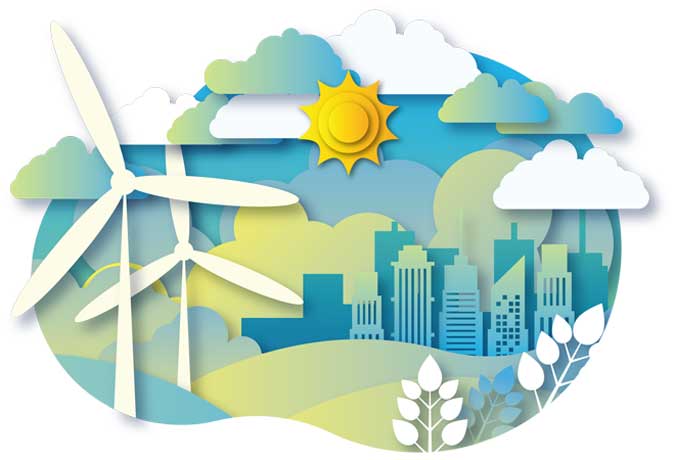
Human Side Of Economics
By Bernardo M. Villegas

Part 2
From what we have written so far, it is clear that the first Industrial Revolution (IR 1.0) would not have occurred were it not preceded by long periods of a gradual increase in the productivity of the agricultural sector.
In the case of England, this “green revolution” was made possible through the enclosure movement, the draining of swamps, and the discovery of new plant varieties, especially of legumes that could be planted during the winter season such as peanuts, clover, alfalfa, and other varieties that provided additional food supplies for humans and animals during the winter. In addition, some of these new plant varieties were nitrogen-fixing and thus fertilized the soil, making it unnecessary to leave the land fallow for long periods of time. England’s experience was replicated by other large countries in Europe and elsewhere which had an important agrarian population. An industrial revolution can happen only if the productivity of agriculture increases sufficiently to release workers for the industrial sector and to provide reasonably priced food for the urban population. In the case of the industrialization of Japan, a significant improvement in agricultural productivity was also a pre-requisite to the importation of borrowed technology on which Japan depended heavily in its efforts to industrialize in the latter part of the 19th century and early 20th centuries.
This explains why the Philippines never really had a real IR 1.0. None of the stages of the Industrial revolution (second, third or fourth) can really help us address the serious challenge of mass poverty unless we first have an agricultural revolution, i.e., a significant increase in the productivity of our agricultural sector that is needed for sustainable and inclusive growth. Seventy five percent of the poorest of the poor in our country are in the rural areas and they heavily depend on agriculture, fisheries, and forestry for their livelihood.
Not only did we fail in providing this pre-condition to the first industrial revolution, our feeble attempts to develop a post-agrarian manufacturing sector after gaining political independence in 1946 did not get much traction because, unlike our “tiger economy” neighbors, we lingered too long in the stage of import-substitution industrialization and failed to launch export-oriented manufacturing enterprises that could have significantly employed our excess labor and reduced mass poverty. Instead, in the name of Filipino First, we erected highly inefficient, capital-intensive industries by surrounding them with very high tariff walls, maintaining an unrealistic foreign exchange rate that we kept at P2 to $1 for a long period of time as our neighbors were devaluing their currencies to support their export-oriented industries, and gifted these “babied” industries with very cheap loans by keeping real interest rates at unrealistically low levels. This explains why manufacturing never contributed more than 12% or so to our labor force (as compared to 20% to 25% of most our East Asian neighbors) and not more than 20% or so to GDP (as compared to over 30% among our peers).
It should not be a surprise then that today we have a predominantly service-oriented economy, with services contributing some 60% to our nation’s Gross National Product (GNP). Manufacturing contributes only 23% while the whole of industry (which also includes mining, construction, and public utilities) contributes 34%, with agriculture accounting for a measly 10%.
No need to cry over spilt milk, though. What is done is done. We can still strive for a real IR 1.0 if we work hard in the next decade or so to significantly improve the productivity of our farm sector and its allied sectors in agribusiness (post-harvest facilities, agricultural inputs, cold storage, logistics, food processing or manufacturing and food retailing). Agribusiness can do much to address the mass poverty that is the greatest scandal in our economy. At the same time, by equipping these more than 20 million people who are poor today with higher incomes, we can finally succeed in fostering the growth of the industries typical of the IR 1.0 (food, clothing, shelter, and other basic necessities) on the basis of a large domestic consumer market of close to a 150 million people in the next 20 years. We need no longer aspire to be as export-oriented as our neighbors (especially the likes of Singapore, Taiwan and Hong Kong) because most of our enterprises can be sufficiently sustainable on the basis of their sales to the large domestic market (as our largest manufacturing enterprises are already doing now).
Completing our IR 1.0 can be strongly complemented by our giving the highest priority to the sectors that comprised the IR 2.0, which is also known as the Technological Revolution. This was the period between 1870 and 1914 during which there were massive installations of extensive railroad and telegraph networks, which allowed for more rapid transfer of people and ideas. While IR 1.0 was driven by limited use of steam engines, interchangeable parts, and mass production, and was largely water-powered, IR 2.0 was characterized by the build-out of railroads, large-scale iron and steel production, widespread use of machinery in manufacturing, greatly increased use of steam power, greater use of the telegraph and of petroleum, and the beginning of electrification. This period was most especially characterized by the discovery of electricity. Increasing electrification made it possible for factories to develop the modern production line. This period saw great economic growth that resulted from very high increases in productivity in many sectors. We can actually compare this period with what is happening now in the Philippines as we focus on the Build, Build, Build programs of both the government and private sectors.
As we try to complete the unfinished IR 2.0 in the Philippines, there must be a focus on extending the transport, telecommunication, and electrification revolution to the rural areas where the majority of the poorest Filipinos live and work. The Government budget for Build, Build, Build must continue to be concentrated in the countryside, especially in the building of farm-to-market roads, irrigation systems, post-harvest facilities, and the other requirements of the small farmers for increased productivity. Improvements of urban infrastructure, especially in Metro Manila and Metro Cebu, should, as much as possible, be addressed through the Public-Private Partnership (PPP) mode, using the capital and management expertise of the private sector. We should continue to give incentives to corporations like San Miguel, Megawide, DMCI Holdings, Metro Pacific, and the ICTS (Razon) group of companies to invest heavily in airports, skyways, power plants, railways, and seaports.
Rural electrification should be given another big push, now with renewable sources of energy such as solar, wind, hydro, and biomass. It is providential that these renewable sources of energy, in addition to addressing the problem of climate change, can be financially viable at smaller scales of operations that can bring electricity to remote areas that are not connected to the grid. This is especially crucial in the numerous islands that are very attractive for both domestic and foreign tourism, such as the existing solar plant close to the famous underground river of Palawan.
As regards railroads, I still have hopes that, despite our political differences with China, this major economic power in Asia can still help us build railways that will make travel within the whole island of Mindanao faster and more efficient. It is Mindanao that very badly needs the Second Industrial Revolution.
To be continued.
Bernardo M. Villegas has a Ph.D. in Economics from Harvard, is Professor Emeritus at the University of Asia and the Pacific, and a Visiting Professor at the IESE Business School in Barcelona, Spain. He was a member of the 1986 Constitutional Commission.